JACQUELINE BRICARD WELCOMES NAÏF ARTISTS TO LOURMARIN
Naïf art is that which takes inspiration from the soul. The artists who produce this style of work are generally self-taught or at least not academically trained. Their work is therefore free from any prescribed convention. Their work is usually characterized by very bright and bold colors, distortions in perspective and size, and a seemingly childlike or simplistic style (although a closer examination reveals that the work is neither although it certainly appeals to the child in each of us!).
If you are a fan of Naïf–naive–artwork or if you are at all curious about it, Lourmarin is the place to be now through November 6, 2011.
As you read through this article, be sure to click on the links highlighted on the title of each painting. They will lead you to a photograph of each painting.
Madame Jacqueline Bricard, who owns La Galerie d’Art Naïf on Place de l’Eglise in Lourmarin, organized the show, which is her second major show extending beyond the gallery. The impetus for the first show, in 2009, stemmed from a discussion with merchants about how to continue to attract people to the village after the summer crowds have dissipated but the famous Provençal weather remains inviting.
The result was the Salon d’Automne à Lourmarin 2009 which was entitled “L’Europe et les Naïfs.” It was a rousing success: over 6000 people attended in five weeks. Not surprisingly, an encore was requested, resulting in the current show.
About 300 paintings comprise the 2011 show, all painted specifically for this exhibit. Artists from sixteen European countries and from Brazil are represented. The majority of the work hails from France with Brazil having the second largest representation, followed by Belgium, Spain, Holland, and Italy, each with four or five artists. One or two artists come from each of these countries: Germany, England, Croatia, Finland, Greece, Poland, Portugal, Romania, Serbia, Switzerland, and Turkey.
An exhibit this large, as they say, “takes a village” and Lourmarin has certainly stepped up to the plate. Madame Bricard has enjoyed the support of the Mayor, Monsieur Blaise Diagne, and the local merchants but I am told she nevertheless worked tirelessly to ensure the success of this exhibit. In August, I myself often saw Madame Bricard–she’s very hard to miss, this attractive, very patrician woman with her perfectly coifed silver hair and radiant smile–along with her constant canine companion, a black lab mix with a graying snout, as they went around the Lourmarin, toting promotional posters that she hung in glass cases around the village.
I happened to be in Lourmarin as the exhibit was unfolding and had the opportunity to talk with Madame Bricard. What a distinct pleasure it was to spend some time with this extraordinary woman whose energy certainly belies her years.
We sat in the living room of her maison de village, adjacent to the gallery. Surrounded by Naïf paintings, as well as other art work, we talked about her initial introduction to this type of art.
“For five years, while my husband worked with Air France, we lived in Yugoslavia,” she began. It was there that she developed her fondness for this art, one that would continue to grow over the years.
The appeal, she explained, was due in part to the fact that the artists “did not know about painting.”
“In the winter, when they couldn’t work on their farms, they painted,” she continued. “And they painted what they knew–their life.”
On the walls of her home hang some of the first paintings she acquired from this early introduction. They are very simple, even primitive, paintings and pen-and-ink drawings of peasant life in Yugoslavia. Their simplicity, though, does not deter the strong feelings that they are able to elicit in the observer.
Nearby are Naïf paintings from Brazil, a country near and dear to Madame Bricard’s heart. It’s where her father was from and where she spent the formative years of her life. Her love of Naïf art sprang forth from her experiences with such art work there, too.
It was not until 1985, when she moved to Marseille, that Madame Bricard organized her first Naïf art exhibit which, not surprisingly, featured work for her beloved Brazil and Yugoslavia. Shortly, thereafter, she moved to Lourmarin where she opened her gallery twenty years ago.
Lourmarin is fortunate to have Madame Bricard among its residents and everyone I spoke with recognized this. “Extraordinaire” was the adjective most often used. Visiting artists I spoke with shared these sentiments.
Danielle Bonniol, from Marseille, said over and over, “personne extraordinaire” and shook her head to emphasize how hard it is to imagine how much this one person has accomplished in the world of Naïf Art.
Because Madame Bricard’s gallery could not possibly hold all the artwork–and to encourage visitors to explore all parts of the village–the paintings are on exhibit in Le Chateau Vieux and la Bibliothèque and in the display windows of nearly all the local shops (37 in total).
Even the children of Lourmarin were involved in this event. Madame Bonniol, the French Naïf artist from Marseille, spent a day with the children from the local elementary school in Lourmarin (where our daughter attended school ten years ago). She talked to them about what Naïf art means and then worked with them to produce the paintings on the windows of L’Espace Camus.
A reception for the painters was held in the chateau on Saturday evening, October 8th. I’m not sure what the official number of attendees was, but my quick head count suggested well over 100 people during the first hour alone. It was a most convivial crowd, enjoying the colorful, whimsical often humorous paintings. Wine was flowing thanks to the generosity of La Cave à Lourmarin (the local wine cooperative) and desserts were served, courtesy of le Boulangerie Riquier (the bakery on rue Henri de Savornin where we prefer to buy our baguettes).
Forty of the artists were in attendance, chatting with attendees. Of course, I couldn’t understand most of what they were saying, but I could feel the excitement in the air. Perhaps because Naïf artists, in contrast to academically trained artists, are said to take their inspiration more from their souls rather than from their brains, conversation is more passionate. Perhaps conversation with artists of this genre is liberated by the fanciful worlds they create on their canvases. As Muriel Schott of Galerie Jacqueline Bricard explained to me, “they create fabulous worlds that you want to live in because there are no worries.”
Stjepan Pongrac, the lone artist from Croatia, had a circle of people gathered around to watch him paint. He uses a typically Croatian technique called “reverse oil painting on glass,” which results in intensely bright colors because the oil paint is applied directly on the glass. In contrast to painting on canvas, the artist begins with his or her signature, followed by the main images and foreground, and then the background. This approach entails layers and layers of paint, with each layer drying completely before proceeding to the next. It was very interesting to watch.
Monsieur Pongrac’s work, like many Naïf artists from Eastern Europe, is dominated by bucolic landscapes. Many of the painters in these countries are farmers, painting at night and during the winter months, so it’s not surprising that they would use what they know best as their springboard. Monsieur Pongrac’s work tends to have a prominent single individual. In one case, this is a scarecrow, aptly entitled “l’épouvantail”. In another of his paintings, “Centenaire du Douanier Rousseau“, he pays homage to Henri Rousseau, for whom the term “Naïf” was first applied around the turn of the 19th century to describe his work.
I found myself smiling as I moved around the exhibit that evening. It is impossible to write about all of the work. “Enchanting,” might best sum up my feelings about the paintings I saw that evening and over the course of the next few days. With no claim of being an art critic, I will just mention a few that stood out for me, among so many that I really liked.
J. P. Lorand’s “Pique-nique au Chateau“ appears on the promotional poster we had seen Madame Bricard hanging around the village. I was immediately drawn to the painting in the chateau. I thought of how picnics have been portrayed in the well-known works of Manet (1863) and Monet (1866), both entitled, “Le Déjeuner sur l’Herbe.” Whether dressed in long gowns or nothing at all, the picnic is always inviting, as is Lorand’s picnic that takes place in front of the chateau in which we all now stood. Lourmarin is the setting for two other paintings by this Belgian artist who I had the pleasure of meeting a few days later.
English painter Linda F. Trott’s “Le Déménagement” was another one that spoke to me. It is a very colorful and detailed depiction of a couch being moved into a fourth floor flat as the neighbors are watching. Very French, complete with a Citroën 2CV.
I spotted Madame Bonniol’s charming painting “Le Concert” as well as a peaceful panorama of Lourmarin.
“Dancing Foxes” by Finnish artist Aimo Katajainer is very sweet and the same artist’s “Le Grand Artiste” illustrates the subtle humor often seen in Naïf art.
Very simple oversized figures dominate Nicole Avezard’s appealing work. It was interesting to me to learn that this artist’s profession is engineering; she is an “ingénieur en mécanique des fluides” and she is the creator of a theater group called “Vamps.”
The gigantic gray cat in the center of Jacqueline Benoit’s “Le Chat” can’t help but make a cat lover smile. For the dog lover, there is the brightly colored charming “Une Vie de Chien” by Elisabeth Davy-Bouttier.
Spanish painter Tito Lucaveche’s “La Vie en Rose” with Edith Piaf performing under a bright spotlight in a crowded cabaret was definitely a crowd pleaser in the Chateau.
I found myself returning for another look at “Factory” by Alain Donnat, a very interesting painting of a crowd’s appreciation of a lone flower in the midst of an industrial world. The theme of this painting seemed unusual for a Naïf artist and more reminiscent of the Impressionists during the Industrial Revolution.
Françoise Syx’s work has a haunting appeal, especially “La Petite Fille a la Cage.”
Greek Artist Sophia Kalogeropoulo’s lovely paintings are bright and look as if they are covered in lace.
Foune’s “Les Melons” which shows a parade of men on the Champs Élysées, all donning black bowler hats — à la surrealistic painter Rene Magritte–except one who wears a red hat and carries a red rose. Is that the unconventional Naïf painter? In my conversation with Madame Bricard, I asked her about this painting. She told me that Foune, who was born in 1927, has a real sense of humor. Madame Bricard thought that the men–all the men–looked remarkably similar to the artist’s husband.
Other paintings by Foune can be seen in the gallery and in store windows around town. “Calèche” hangs in the gallery, a lovely composition of a gentleman lifting his lady friend from a horse drawn carriage. The brilliant blue fan of her skirt juxtaposed with the carriage driver’s bright red coat against the backdrop of 19th century Paris is lovely. Foune’s “L’Endormie,” in the gallery also has this artist’s splashes of red and blue as well as some humor. See if you can figure out why it is called “The Sleepers.”
“Les Petits Fours” is a simple but charming painting of three regal women who seem entranced by a plate of petits fours. It rests in the window of La Cuisine à Simone on rue Henri de Savornin.
Alain Carron’s work is very interesting and seems to include elements of surrealism. His “Lettres Anonymes” looks ominous as black birds and a jester seem to be in charge of the letters.
Swiss painter Carole B. Perret‘s work is striking in its humor, which Madame Schott said was a characteristic of Naïf painters from Switzerland. One can’t help but smile when you look at her “Esprit d’Equipe” depicting a team of young nuns with angelic faces pedaling to keep up with the stern-faced nun on a unicycle.
My friend, Pru Harrington who owns and rents L’Oustaloun, accompanied me on my third visit to the gallery. She was very drawn to paintings of the sea, particularly those by French artist Bernard Ambielle. “Looking at these paintings makes me feel good,” she said. “I love their use of color, their free-spirited style, and the joy I see in their paintings…they transport me!”
The Naïf paintings from Brazil are on exhibit in La Bibliothèque, located on Place H. Barthelemy. I found my friend Madame Schott overseeing the paintings on the day I went. There, I was immediately struck by the tropical landscapes– it was clear we had moved to the equator.
Madame Schott pointed out that the lighting was also different in these paintings. “Each country has different lighting,” Madame Schott explained. “Brazilian artists tend to create a wonderful luminescence in their work.” Indeed, the light from the images of the sun–and the moon– seemed to glow on the canvas.
“C’est magnifique,” one visitor said in reference to the lighting. “C’est très frais,” she added, which, roughly translated, means that the work is fresh, vibrant, bright. I’d have to agree.
As I chatted with my dear friend Muriel, many people came in to view the exhibit. The universal response to this art work seems to be a smile. As the economy continues to takes it’s toll in Europe and around the world, perhaps we will see more Naïf Art.
I thought back to my conversation with Madame Bricard. I had asked her if she ever picked up a paint brush.
“No,” she said. “I don’t have the imagination to do that.”
Perhaps not for painting, but Madame Bricard does “do a little writing.” In fact, in the catalogue for the 2009 Exhibition, Madame Bricard wrote a poem about each of the participating artists. She also wrote a poem to express her feelings about Naïf Art. I’ve included it here, in French, because Madame Bricard said that her feelings would not be adequately conveyed in any language other than her own.
Artwork is available for purchase. Please send inquiries to Jacqueline Bricard: jbricard@wanadoo.fr 04-90-68-20-93

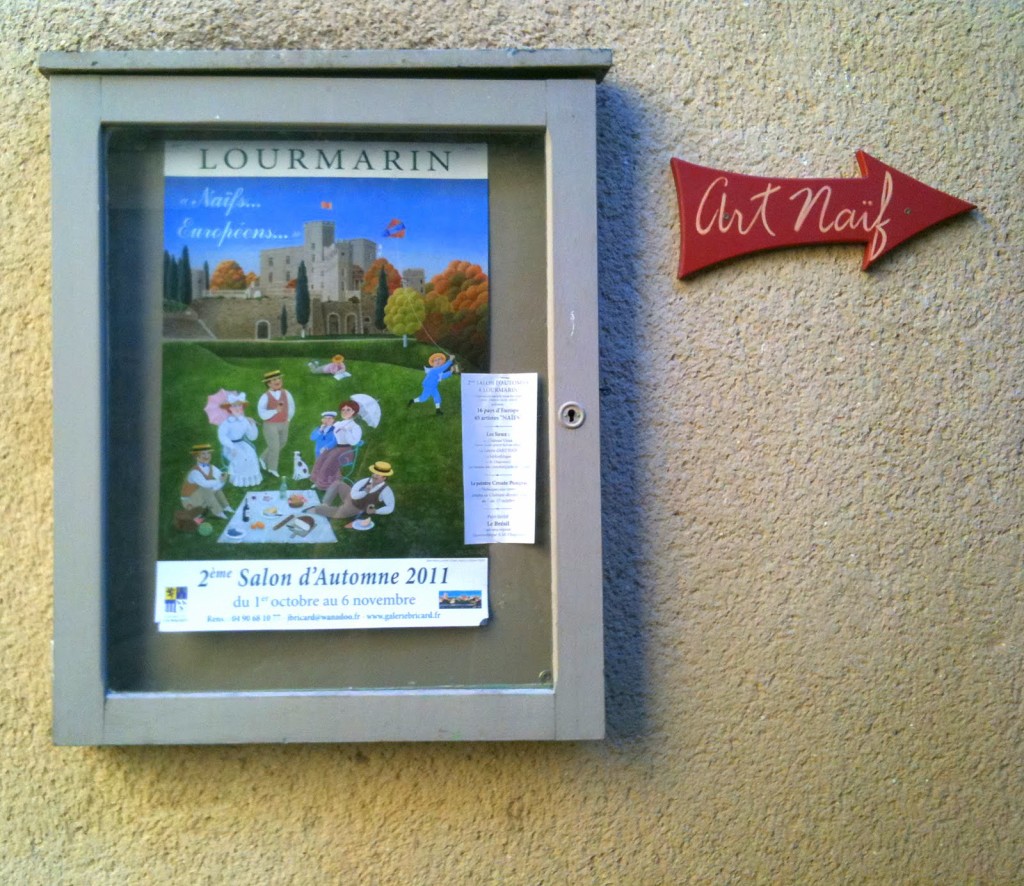
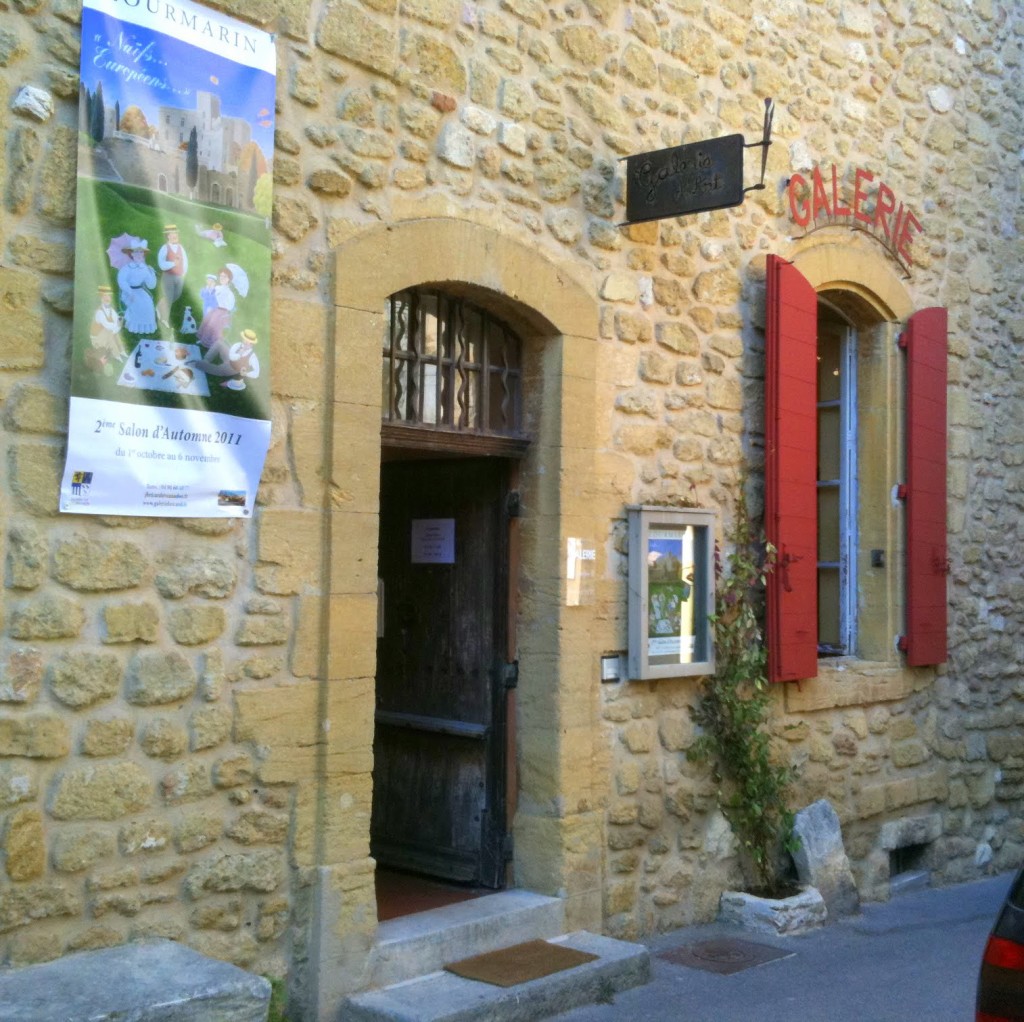
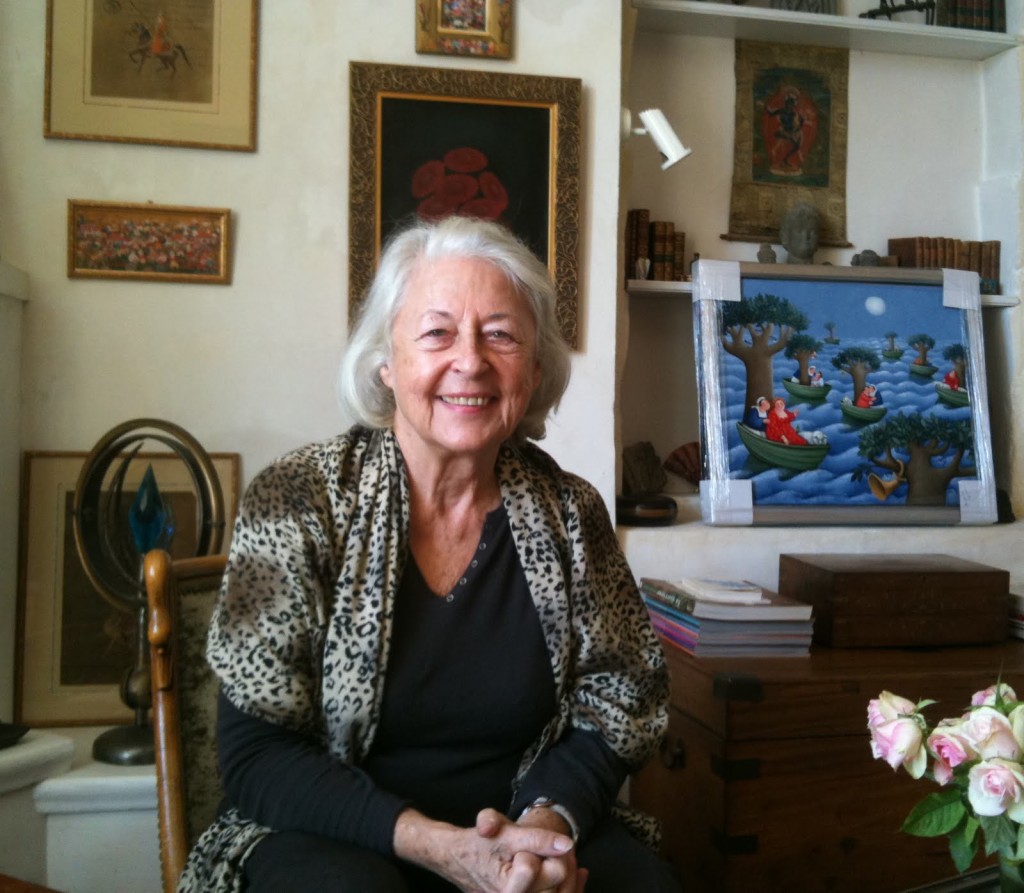
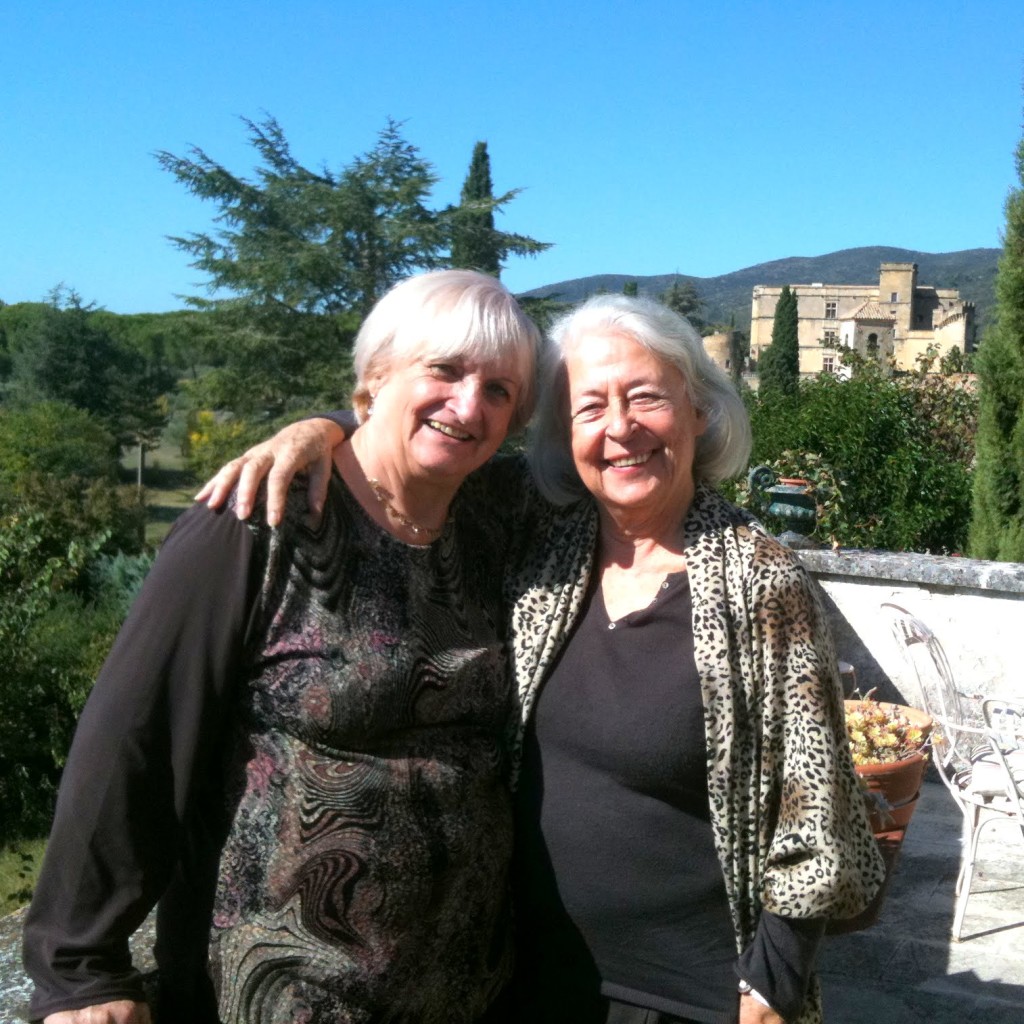
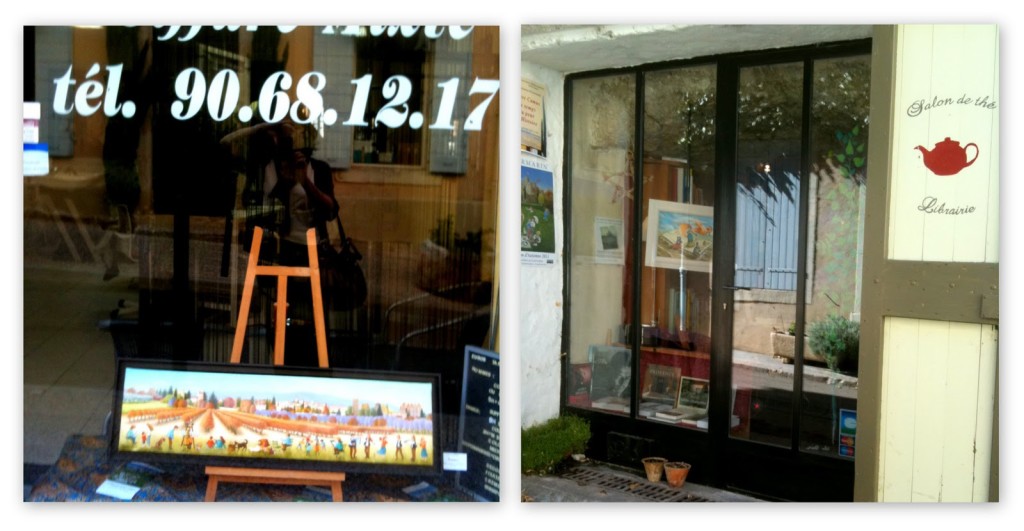
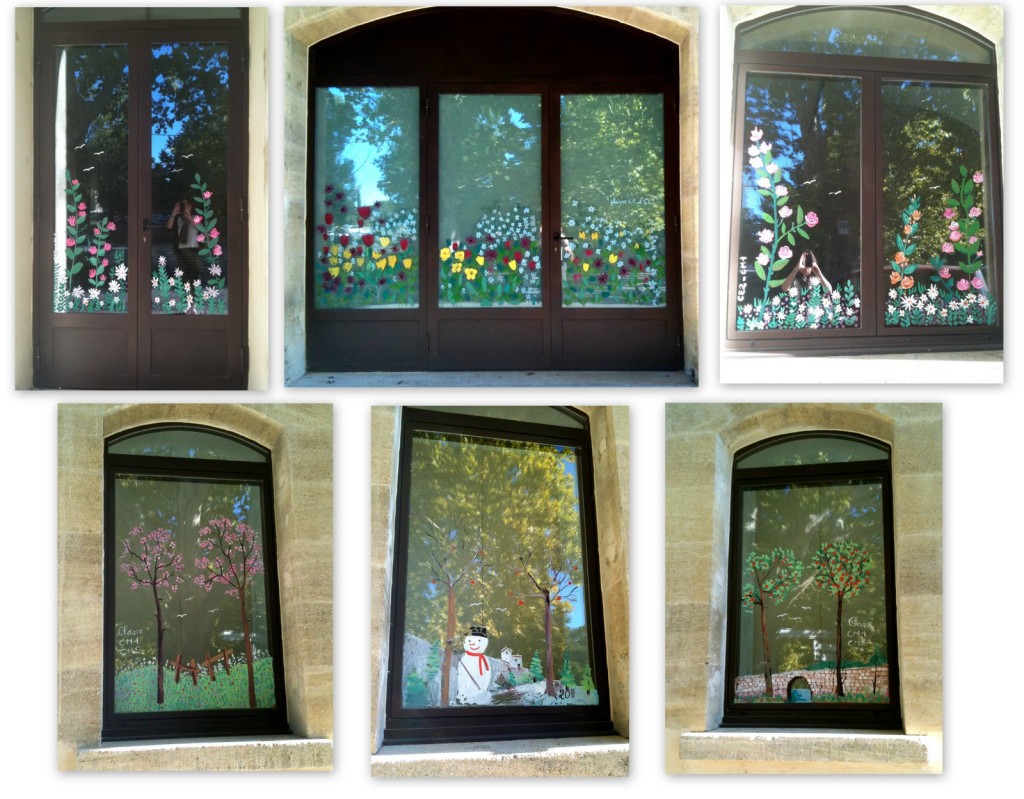

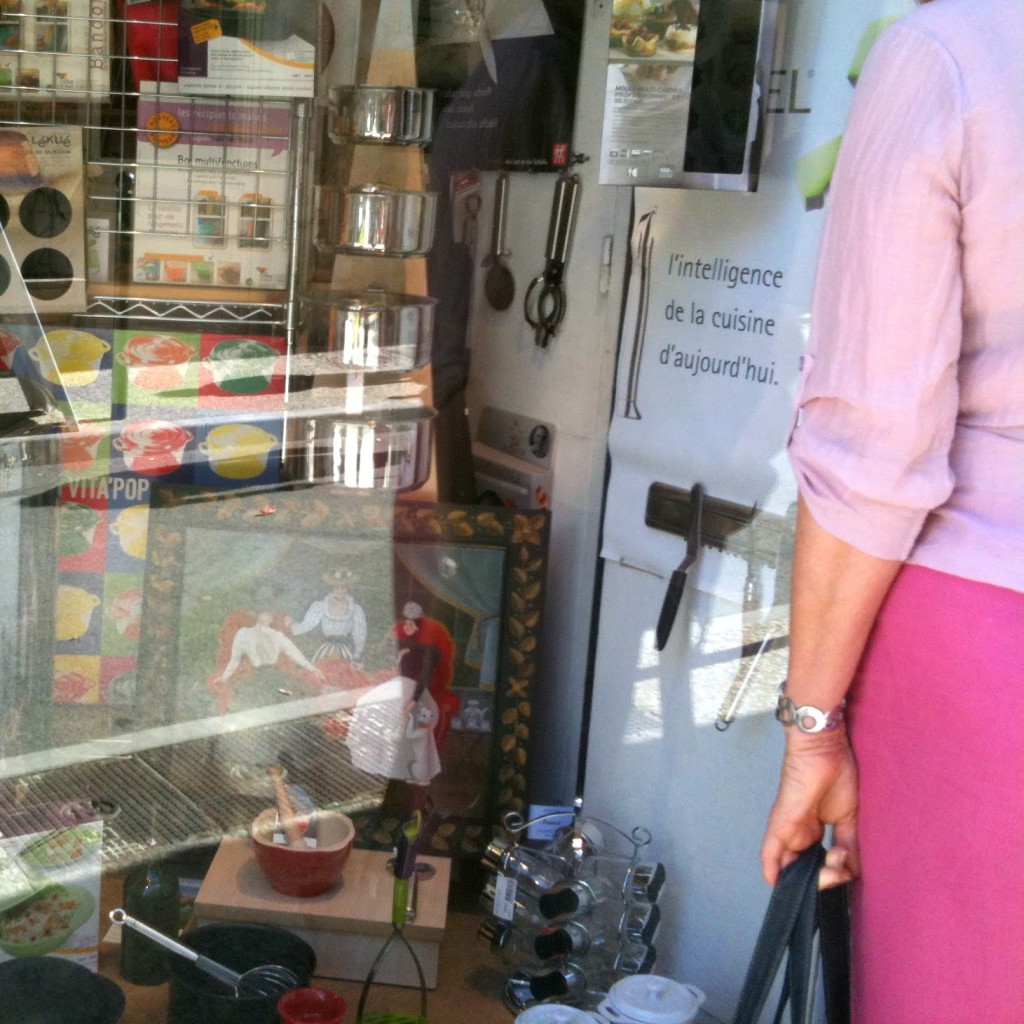
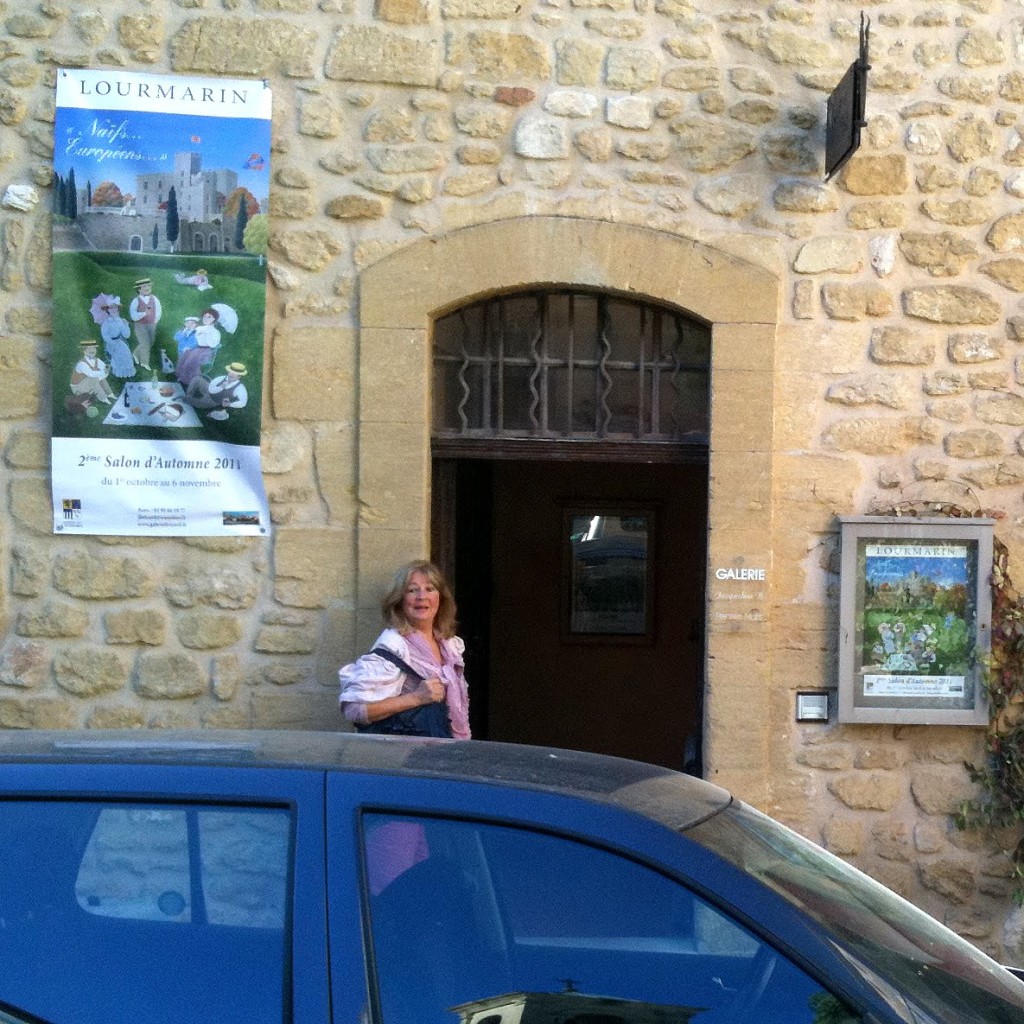
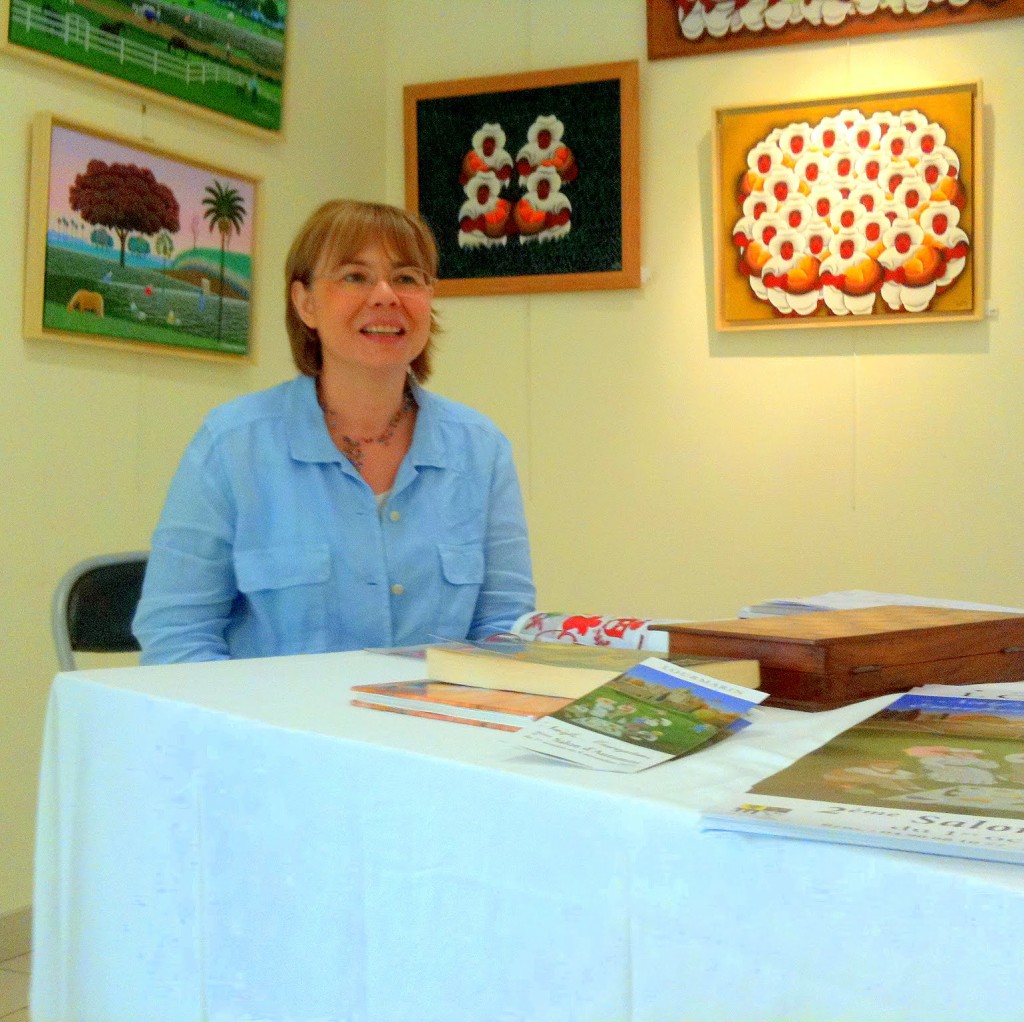
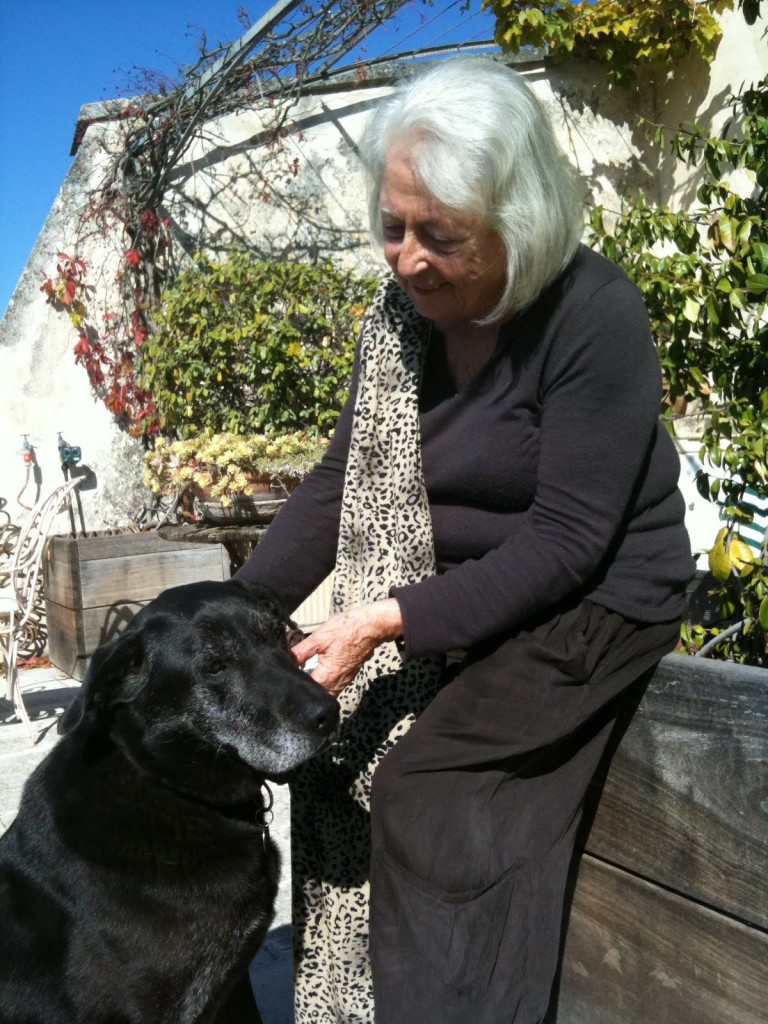
Wow – these are wonderful! They have a charm that is almost describable – yet naïf seems to work so well! I must admit to two favorites – Les Melons and Marseilles – Vieux Port! I wish I could be there to do the rounds with you, Susan!
I wish I could transport you two–for your company but,also, because you could enrich my experience with your vast knowledge of art! The web site does not include all of the paintings, but it does give one a feel for all the wonderful work that makes up the exhibition. The paintings make you smile, don't they?
susan — just spent the better part of 30 minutes perusing your art show post. i'm for sure going to look into these painters more fully. some of them remind me of a "primitive" artist, vesty davis, who painted NYC and Coney Island themes. again with little people and great color. this post was great. thanks and continued enjoyment of the show whilst you are there. global grammy
What I loved most about these – and what brought a smile to my face even before looking at the subject – was the free and untethered use of color. You mentioned the light in the Brazilian pieces, but they all have a great glow about them. Until really looking at this, my only experience with this style of art had been Grandma Moses, and her colors were so dark,depressing and murky… But, considering the New England weather, I can't blame her! And light? There was none! I never recall a GM painting that showed shadows proving that there was sun!
And then the subjects – la vie quotidienne! That is what makes them so special… the fact that they aren't really special at all! Thank you again for this post, and for wishing we were there with you! We are, I'm spirit!
Bisous, D (my iPad wants to turn bisous into Byalis!)
Uh, that should have been, "we are, in spirit!"
Hi Global Grammy,
So glad you enjoyed the post. I looked up Vesty Davis and his work seems to be the very same style….remarkably similar. Thanks so much for mentioning him!
So good to hear from you!
C&L, So funny to read your comments about Grandma Moses. Imagine had she lived in Tucson!
How much fun it would be to be in Loumarin for Jacqueline Bricard's NAIF art exhibit !!
The NAIF artwork combines simplicity with elegance. The people are so sweet and innocent.The picnic scene is reminiscent of a bygone era when pleasures were simple and people were less sophisticated and more civil.
It is like a breath of fresh air that encircles us with nostalgia and leaves us with a happy memory of the way we were.
This comment has been removed by a blog administrator.
Beautiful, congratulations.
The anonymous contributer who wrote that the naïf style artist combines simplicity with elegance is exactly right! Most artists of this style do try to draw us in with the simple pleasures of life. I am still thinking about so many of those paintings!
Thank you to Patricia Henricy Cruzalegui! It was such a pleasure to write this piece! Such beautiful work and interesting people!
Susan, I just visited the exhibit in Lourmarin and was very impressed. I love the paintings you selected. One painter that you did not discuss in your article, that I really liked, was VERCRUYCE. I particularly like "Entre Chats". The brushwork was very detailed–the photos do not do them justice! Thanks for covering the exhibit, glad I went!
Susan, thanks to your note and the poster you left for us at la Bonbonnière, we visited Mme. Bricard's gallery and also the exhibition at the Chateau–wonderful! She certainly is an enthusiastic booster of art naïf, and we had two delightful conversations with her. Thanks for tipping us to this exhibit!
Congratulations!!!